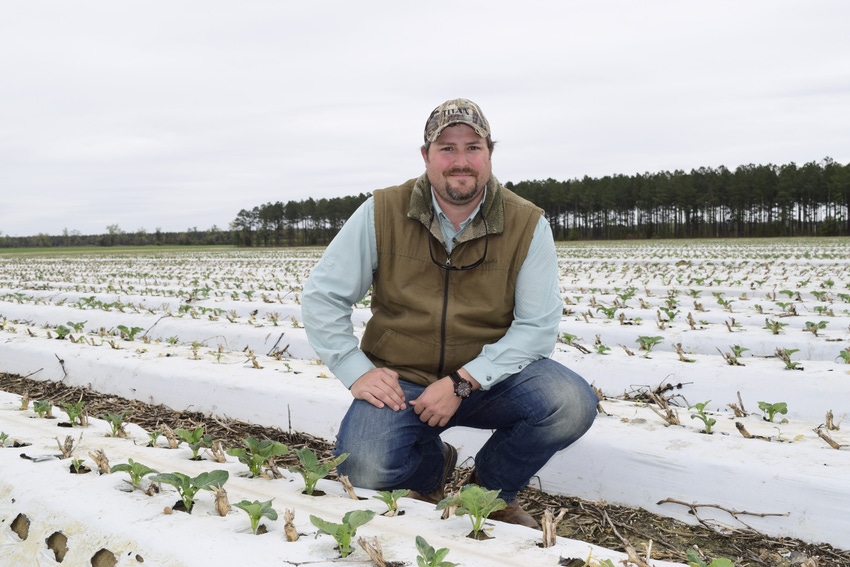April 1, 2019

Sponsored Content
Including Radiant® SC insecticide in a season-long pest management program that includes several modes of action is paying dividends for one South Carolina vegetable producer.
“We have to have Radiant in our rotation. If we don’t, we wouldn’t see the yields that we do, and thrips would eat us alive,” Corey Harmon says.
Harmon, who produces broccoli, eggplant and bell peppers, as well as tomatoes, watermelon and cantaloupe as director of vegetable operations on Titan Farms in Ridge Springs, South Carolina, begins scouting for pests at first bloom. Particularly targeted are armyworm, June bugs, cutworm, whiteflies and thrips.
“We use a lot of Radiant, especially for peppers,” he says. “We’ll spray it in a tank at least once a week as we spray different areas of our farm in crop protection product rotations.”
While based on scouting reports, Harmon’s insecticide treatment schedule generally targets thrips beginning at Day 21, or the third week after planting
“We start with Radiant. It’s the big punch, and by Day 21, every bug your area has is in that field. You want to hit it hard then,” he says. “We start with Radiant when we begin to see cutters come into the field. Within a day or two of spraying, we’re seeing quick knockdown of pests. Radiant makes a world of difference.”
In addition to rotating modes of action during the first several weeks of the season, Harmon adds another insecticide and a fungicide to the mix closer to harvest.
He uses similar insecticide programs for his broccoli and eggplant crops.
“Our objective last year was a pepper yield of 1,400 boxes per acre for the fall crop. We averaged 1,680 boxes per acre. Radiant is helping us achieve that yield,” Harmon says.
™®Trademarks of Dow AgroSciences, DuPont or Pioneer, and their affiliated companies or their respective owners. Always read and follow label directions.
CA14-358-020 (04/19) BR DAAG8RADI059
About the Author(s)
You May Also Like






